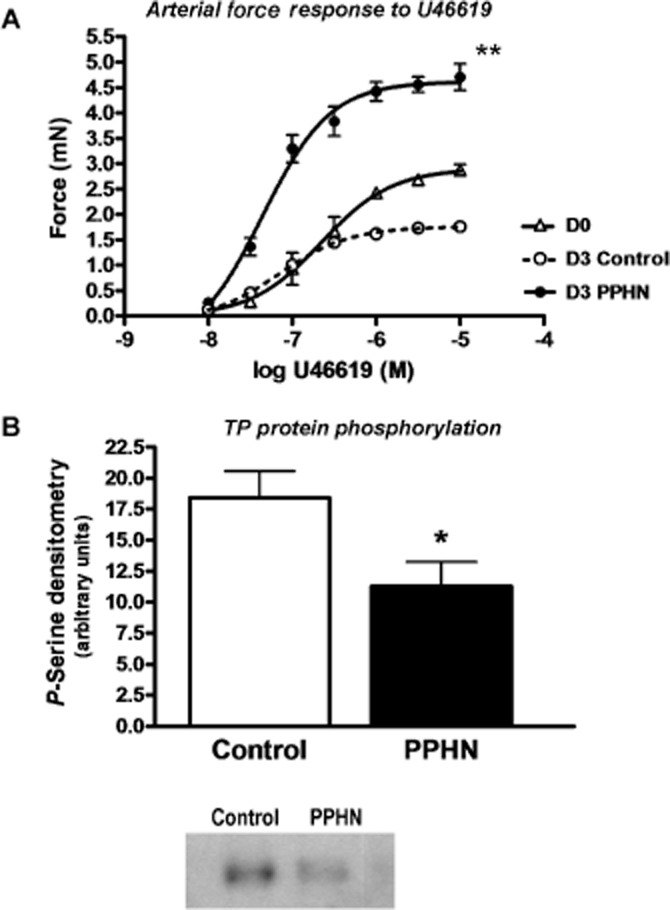Figure 1.

TP receptor phosphorylation is decreased in pulmonary artery myocytes from PPHN animals. (A) Pulmonary arterial rings from newborn (D0), 3-day-old normoxic (D3 Control) and hypoxic pulmonary hypertensive animals (D3 PPHN) were subjected to isometric myography (set at optimal length by length–tension curve; force measurements normalized to maximal KCl-induced force). n = 4 animals per group. Contraction force to TP agonist U46619 declines over the first 3 days of life in normal animals. Hypoxic PPHN increases TP receptor-mediated contraction, **P < 0.001. (B) Representative blot and histogram showing phosphorylation of TP receptors in contractile pulmonary arterial myocytes primary cultured from 3 day hypoxic PPHN swine and age-matched normoxic controls. Cell lysates were subjected to immunoprecipitation using polyclonal antibody (rabbit) to thromboxane receptor, and TP serine phosphorylation quantified in immunoprecipitates by Western blot (mouse monoclonal antibody to phospho-serine; *P < 0.05, n = 8). Total TP receptor protein content was unchanged (not shown).
